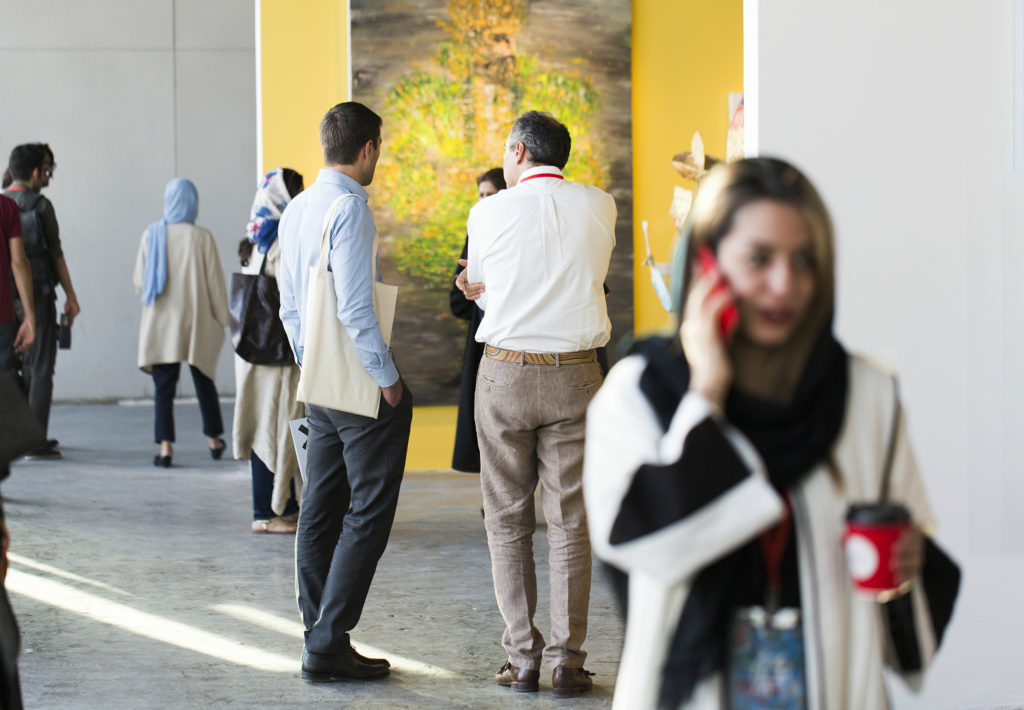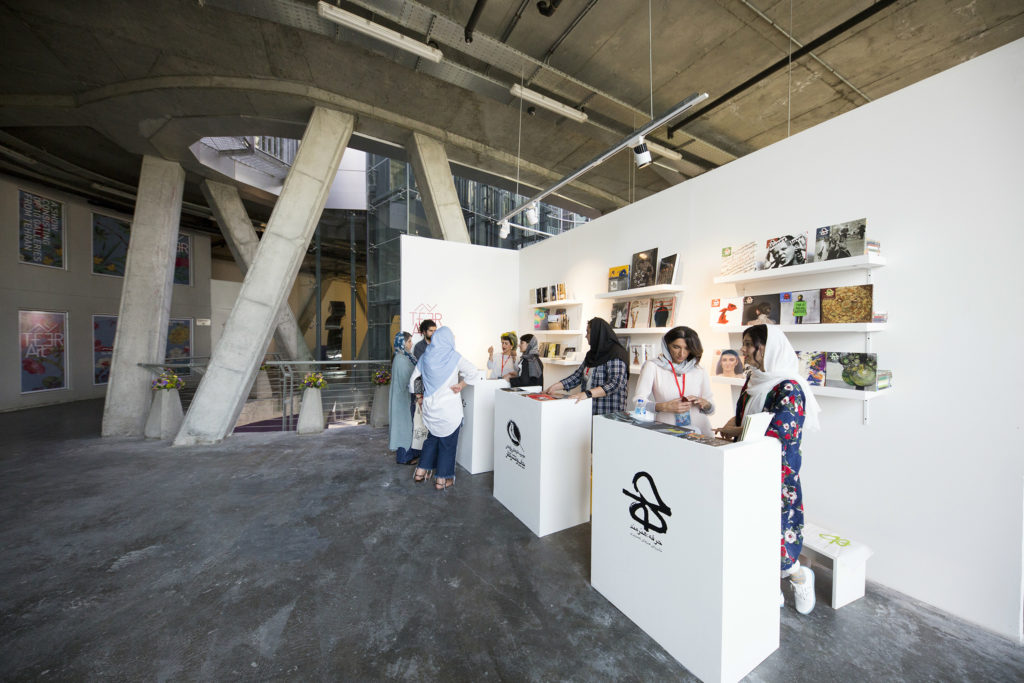Art Fairs
‘Art Is Almost Free’: Iran Opens Its First-Ever Art Fair—Just as the Value of the Country’s Currency Plummets
The founder of Teer Art says that with that anyone with foreign currency could "walk off with most of what’s on display."

The founder of Teer Art says that with that anyone with foreign currency could "walk off with most of what’s on display."

Tahereh Sariban

Imagine you are a gallerist preparing to attend an art fair. But almost overnight, the value of the works you plan to sell drops by half.
What is a bad dream for some dealers is a reality in Tehran, where 10 dealers gathered last week to participate in the country’s first art fair. Teer Art opened against the backdrop of protests in the Iranian capital as the country’s currency, the rial, hit a new low. Since the US withdrew from the Iranian nuclear deal in May, the rial has lost more than 40 percent of its value.
Against all odds, however, the mood on the fair’s opening day on June 24 was positive. There’s a first time for everything, and for this first edition of an art fair in Tehran, just opening on time is an achievement.
Local galleries gathered on the top floor of a circular parking lot and hung their wares on temporary divider walls. Windows framed sweeping views of North Tehran. Catalogues were displayed on coffee tables and 20 cooling towers were doing their best to combat the heat inside the unconventional venue.
This is how Iranian galleries cope when the value of the work they are presenting has suddenly plummeted: By doing what they can with what they have.

TEER, Tehran’s first contemporary art fair, takes place in a high-rise car park. Photo courtesy of the organizers.
Welcome to Tehran, where nothing comes easy. Events like this one may seem to materialize out of thin air, pretty-packaged and well-oiled, but the work behind the scenes consists of efforts taken for granted in most capitals of the world.
Asked about the effect of the rising US dollar and the looming additional sanctions against Iran, Hormoz Hematian, the founder of Teer Art and the local gallery Dastan’s Basement, said, half-joking, half-seriously: “Now’s the time for anyone with foreign currency to buy Iranian art. Patrons can literally walk in here with rials in a suitcase and walk off with most of what’s on display.”
Transporting some of the more ambitious, large-scale works on view, however, would be another matter. Suspended above Dastan Projects’s stand was an over-sized split gem of fractal mirrors by the artist Pooya Aryanpour (born 1971), which was almost too heavy to sway.

TEER Art, Tehran, photo courtesy of the organizers.
Meanwhile, at Ab-Anbar, a gallery dedicated to Iran’s expatriate artists, the 87-year-old Modernist and auction heavyweight Sirak Melkonian has a solo booth of new works on canvas and tissue. Mohsen Gallery is presenting drawings by 35-year-old Sara Abbasian resembling half-gnawed humans that appear to have been infected by weaponized insects.
“Art is almost for free,” Hematian said, throwing his hands up in the air. He didn’t directly answer the question about the impact of the new sanctions, Donald Trump’s recently upheld travel ban, and dramatic currency devaluation, but his body language spoke volumes. No one—from artists to galleries to buyers—is confronting a new situation in Iran, which has plenty of experience with economic and cultural isolation. Now, they are simply experiencing an intensified version of a familiar situation.
How do you judge the success of a fair happening under such dramatic circumstances? For Hematian and Maryam Majd, Teer Art’s director, this first edition, which has been more than four years in the making, has little ground for comparison, since there has never before been an art fair in Tehran. Calm and collected, looking around, Majd declared, without arrogance and with quiet relief in her voice: “We did it.”
The organizers intentionally limited the fair’s size “to keep it manageable and give ourselves the opportunity to deliver acceptable quality,” Majd said. “This first edition is for us a blank run, a test of our practical abilities. Today, we know we can do it, and this makes us optimistic in our ability to do more and better in coming years.”

The show must, and did, go on: TEER Art, Tehran, photo courtesy of the organizers.
Only a handful of invitations went out and just 10 galleries were given the opportunity to participate. Galleries were allowed to take part only if they had previously exhibited at an international fair. The lineup did not reflect the full diversity of Iran’s art market: Iran’s capital has seen the number of registered art galleries grow from just a handful in the 1990s to more than a 100 today. In the future, the organizers hope to open up the fair to more exhibitors, both within and in the proximity of Iran.
Teer Art was timed to coincide with the Tehran Auction, a twice-yearly event now in its ninth edition that offers work by Iranian Modern masters to a global audience. The organizers hoped to capitalize on the wider pool of potential buyers in town for the auction.
With prices starting at 18 million rial (a mere $250) and climbing to $80,000, sales at Teer were, in the wake of the VIP preview, “satisfactory,” according to Majd. “Some galleries saw healthier sales than others. Before the fair’s end, our work is to ensure all works are introduced to potential buyers.”
Many hope that next year will see more of everything: Galleries, artists, genres, and a generally more inclusive presentation of Iran’s vibrant contemporary art scene. (Artists were quick to point out the under-representation of performance and new media art such as light, sound installation, and video.)
The challenge for Teer Art, which closed its first edition on June 29, is now to build on the strength of an artistic nation that endures despite sanctions and hardship, and transform itself into an event with truly global reach.
As Iran prepares to reckon with its currency crisis and braces for new sanctions to come into place this fall, Orkideh Daroodi, the director of O Gallery, was sanguine. “Next week can—and probably will—bring heaps of unknown,” he said. “For now, the gathering of 10 galleries is a good thing.”